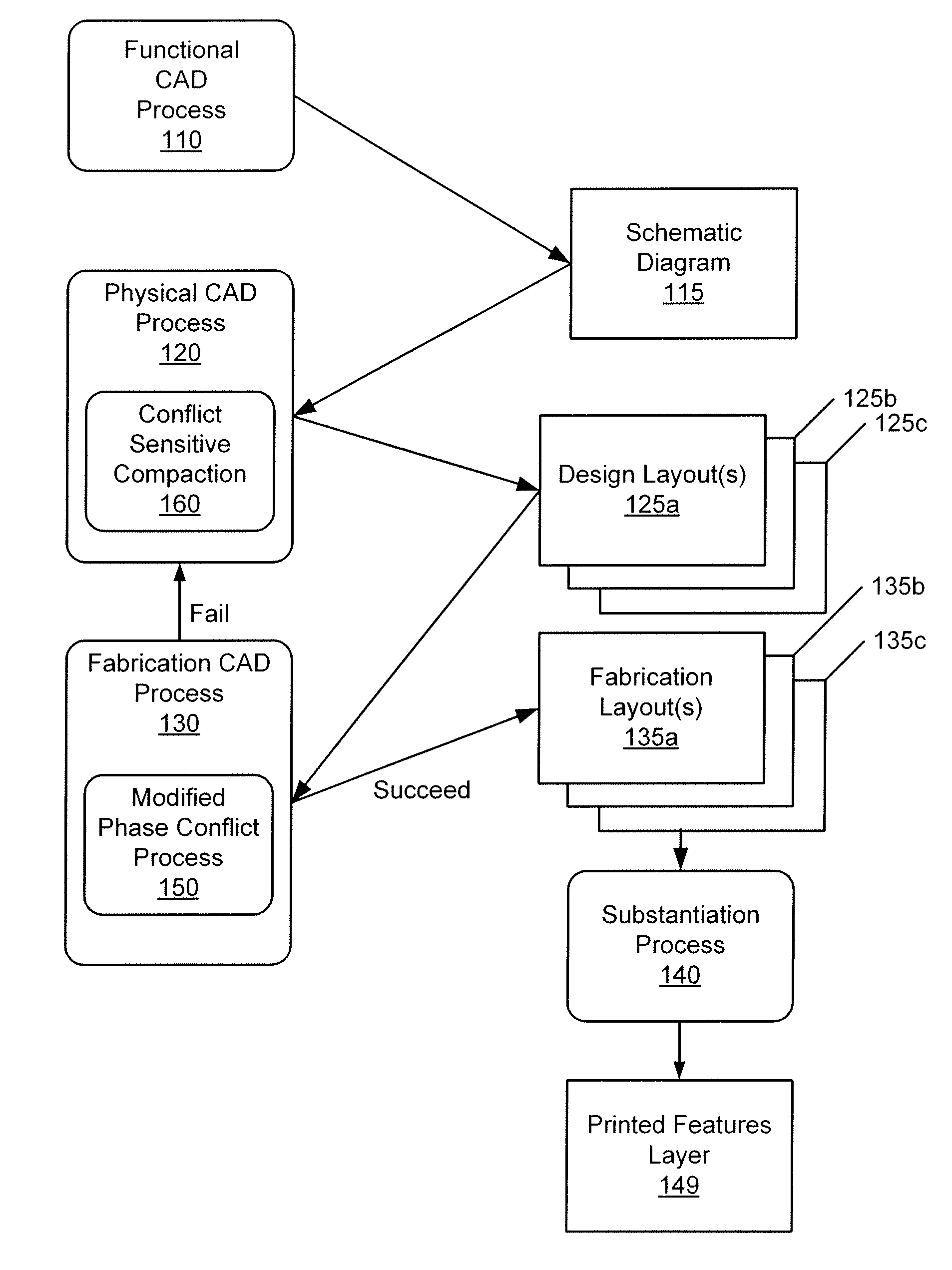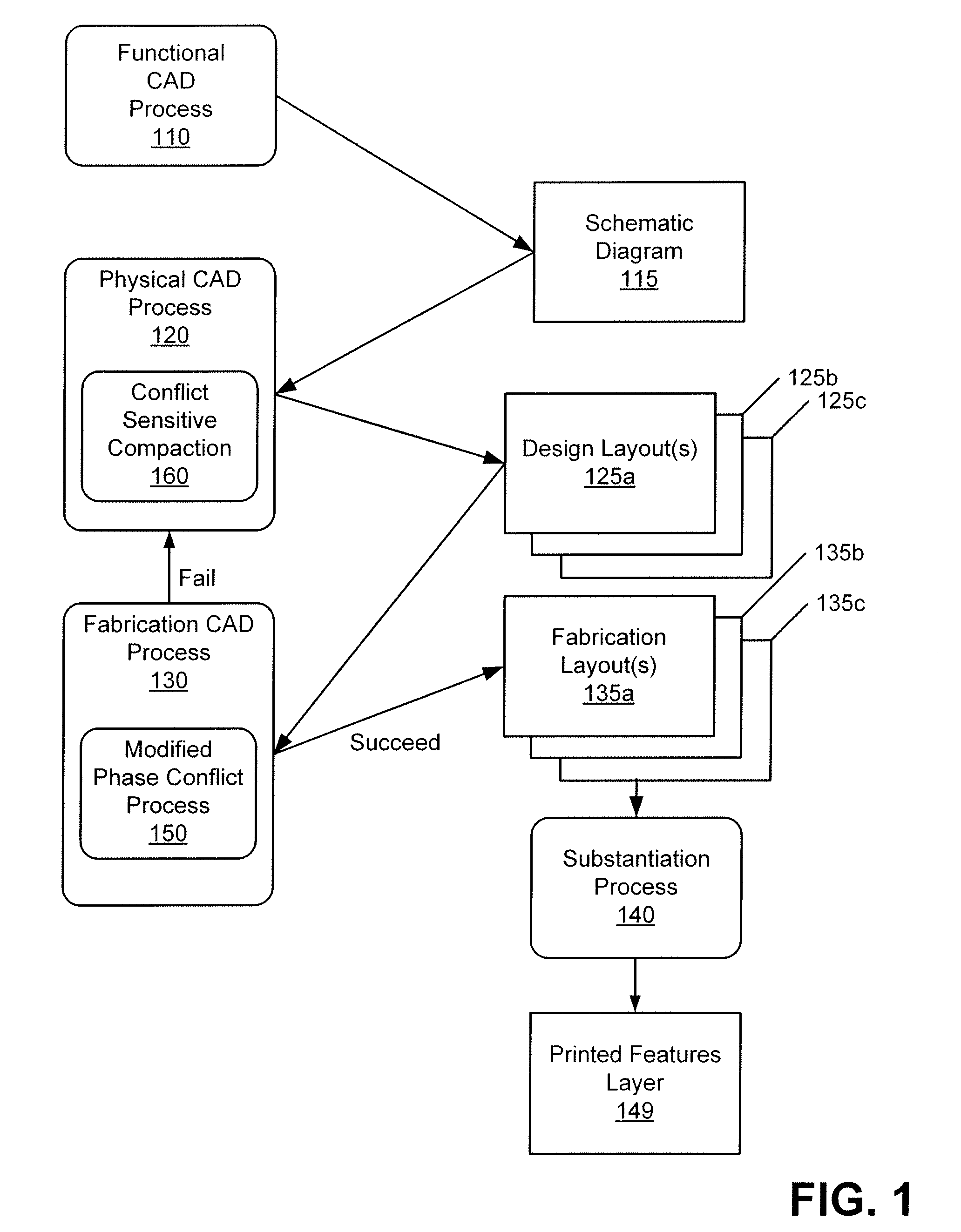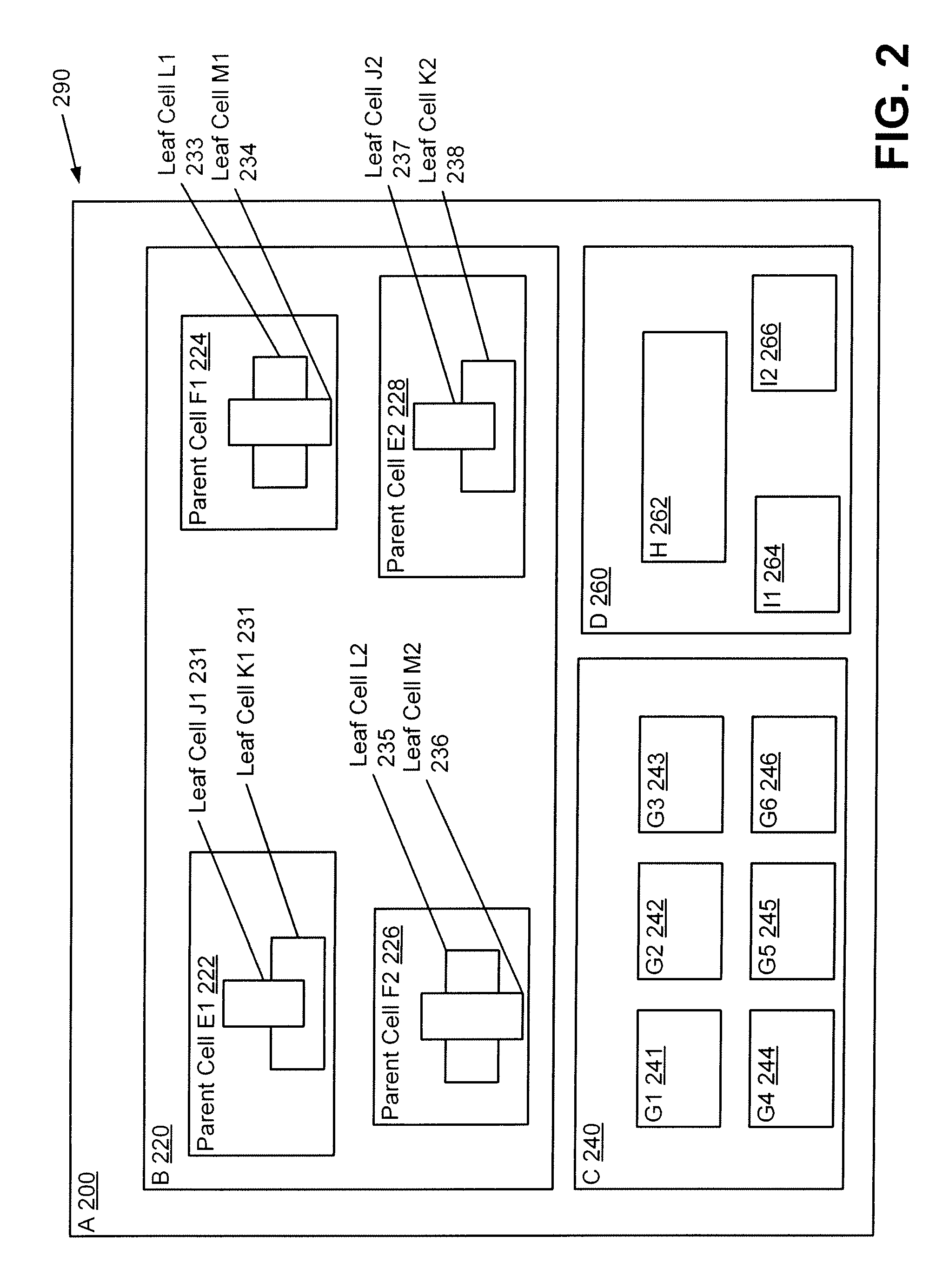Incrementally Resolved Phase-Shift Conflicts In Layouts For Phase-Shifted Features
a technology of phase-shifting features and conflict resolution, which is applied in the field of printed circuit manufacturing, can solve problems such as conflict that cannot be solved, phase-shift conflict, and failure to allow shifter b
- Summary
- Abstract
- Description
- Claims
- Application Information
AI Technical Summary
Benefits of technology
Problems solved by technology
Method used
Image
Examples
Embodiment Construction
[0042] A method and apparatus for fabricating printed features layers, such as in integrated circuits, are described. In the following description, for the purposes of explanation, numerous specific details are set forth in order to provide a thorough understanding of the present invention. It will be apparent, however, to one skilled in the art that the present invention may be practiced without these specific details. In other instances, well-known structures and devices are shown in block diagram form in order to avoid unnecessarily obscuring the present invention.
Functional Overview
[0043] Techniques are provided for designing and fabricating printed features layers using a conflict sensitive compaction process 160 in the physical CAD process 120, and a modified phase conflict process 150 in the fabrication CAD process 130, as shown in FIG. 1. In the remainder of this section the relationship between the two techniques is described at a high level. In the following sections th...
PUM
| Property | Measurement | Unit |
|---|---|---|
| phase | aaaaa | aaaaa |
| distance | aaaaa | aaaaa |
| relative phase | aaaaa | aaaaa |
Abstract
Description
Claims
Application Information
 Login to View More
Login to View More - R&D
- Intellectual Property
- Life Sciences
- Materials
- Tech Scout
- Unparalleled Data Quality
- Higher Quality Content
- 60% Fewer Hallucinations
Browse by: Latest US Patents, China's latest patents, Technical Efficacy Thesaurus, Application Domain, Technology Topic, Popular Technical Reports.
© 2025 PatSnap. All rights reserved.Legal|Privacy policy|Modern Slavery Act Transparency Statement|Sitemap|About US| Contact US: help@patsnap.com



